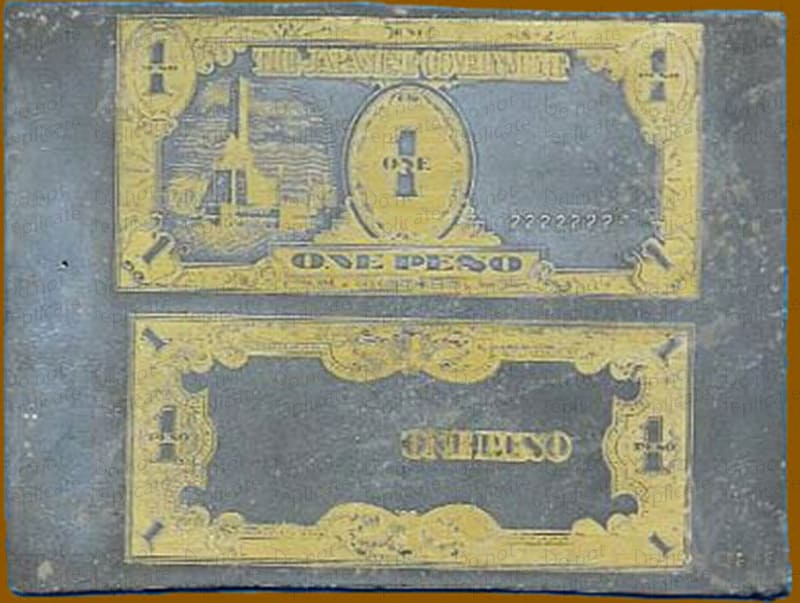Guerrilla Money
A history of WWII Philippines currency

Exonumia
-
Exonumia
Exonumia is numismatic items other than coins and paper money. Examples would be tokens, ration tickets, and medals. Also included (at least from my perspective) are “short snorters”, since the importance of them is only partially related to the fact that they are paper money. The Japanese government, as well as their puppet government, both…
-
Money washing – by the government?
Transcript No. 2057August 22, 2000 WORLD WAR TWO PHILIPPINE PAPER MONEYBy Gerald Tebben Why would the U.S. government take new paper money and put it into a revolving drum . . . with sand, floor sweepings and soggy coffee grounds? The answer to that question is: To win a war. During World War II, the…
-
Information about collecting
Also, please note – MANY of the notes from these provinces are highly collectable, and therefore there are a LOT of modern counterfeits out there. I recently purchased several notes from a few sellers on eBay with near 100% feedback, and the some of the notes were counterfeit. Very well made ones, but still fake.…
-
J.I.M. Printing

Here are some images of the printing plates used to make the Japanese Invasion Money, as well as bundled packs of notes, as packaged during the war for distribution.
-
Other Information
All reference/catalog numbers for the notes listed on this site come from the books listed below- either Specialized (if the reference is S ###), General (if the reference is P ####), or Shafer Emergency and Guerrilla Currency (if the reference is 3 letters and 3 numbers). These are the standard references for this type of…
-
Mindanao printing press
By Janine Nunez-Sanciangco and Joel Rufino A. Nunez On December 8, 1941, Japanese forces invaded the Philippines. Following the attacks, the United States and Philippine Army forces as well as the Reserved Officer Training Corps [ROTC] were immediately called into action. Among the ROTC cadets who responded was our father, Jose P. Nunez, who was…
Latest Post
Categories
- 11th Division
- 7th District
- Aguataya
- Aklan
- Antequera
- Antique
- Apayao
- Aviator Notes
- Balangiga
- Bantayan
- Barbaza
- Basey
- Bohol
- Borongan
- Cagayan
- Cagayancillo
- Calape
- Calbiga
- Capiz
- Cebu
- Central Negros
- Clarin
- Coron
- Culion Leper Colony
- Cuyo
- Dimilao
- Dolores
- Dumaran
- East Negros
- Exonumia
- Free Negros
- Guerrilla Money
- Guiuan
- Hernani
- Hilongos
- Ilocos Norte
- Iloilo
- Isabella
- Janga
- Japanese Authorized
- JAPWANCAP
- JIM
- KKKK
- Lanao
- Leyte
- Llorente
- Loboc
- Loon
- Luzon
- Maasin
- Macrohon
- Maribojoc
- Markings
- Masbate
- Masbate Consolidated Mining
- Mindanao
- Mindoro
- Misamis Occidental
- Misamis Oriental
- Mountain
- Mountain Counter-strikes
- Negros
- Negros Occidental
- Negros Oriental
- Nueva Vizcaya
- Oras
- Palawan
- Pambujan Sur
- People
- PQOG
- Republica Ng Pilipinas
- Romblon
- Romblon (city)
- Salcedo
- Samar
- San Julian
- Sibuyan
- Sulat
- Surigao
- Taft
- Tubigon
- U.S. Special Issues
- Ubay
- Uncategorized
- USAFFE
- Victory Central Bank overprints
- Victory series
- War Notes
- Zamboanga
- Zamboanga bank